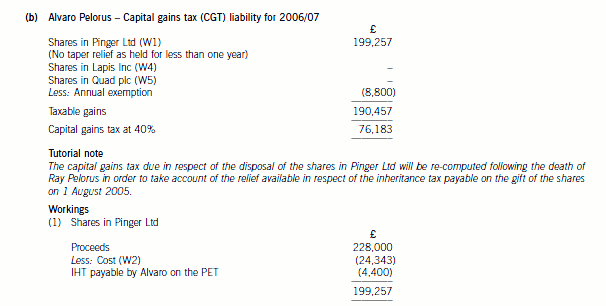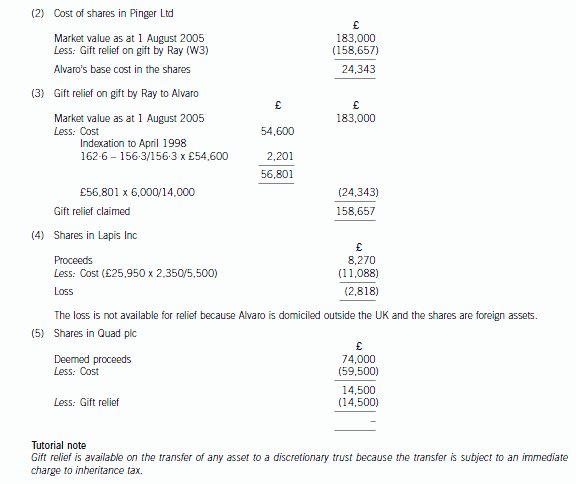ACCAF1考试-会计师与企业(基础阶段)模拟试题(2020-10-11)
发布时间:2020-10-11
各位要参加2020年考试的小伙伴们注意啦!今天51题库考试学习网给各位小伙伴分享ACCAF1考试-会计师与企业(基础阶段)模拟试题练习11,感兴趣的小伙伴赶快来围观哦!
11.1 Which of the following leadership
styles gives the most discretion or decision-making power to subordinates?
A Autocratic
B Consultative
C Democratic
D Persuasive
答案:C
11.2 What is delegated by a superior to a
subordinate?
A Authority
B Power
C Responsibility
答案:A
11.3 Which of the following is not a
technique of scientific management or Taylorism?
A Micro-design of jobs
B Work study techniques to establish
efficient methods
C Multi-skilled teamworking
D Financial incentives
答案:C
11.4 According to Fielder, which of the
following are true of psychologically distant managers?
1 They judge their staff on the basis of
performance
2 They are primarily task-oriented
3 They prefer formal consultation methods
rather than seeking staff opinions
4 They are closer to their staff
A 1 and 2
B 2 and 3
C 1, 2 and 3
D 1, 2, 3 and 4
答案:C
11.5 Monica is a manager in the finance
department of P Co and she has several staff working for her. She has become
quite friendly with most of her staff and they like her and appreciate that she
does everything she can to attend to their needs. Which type of managerial
style does Monica have?
A Impoverished
B Task management
C Country club
D Dampened pendulum
答案:C
11.6 Which of the following writers is not
a member of the school of management thought to which the others belong?
A FW Taylor
B Elton Mayo
C Abraham Maslow
D Frederick Herzberg
答案:A
11.7 Leaders may be distinguished from
managers by the fact that they do not depend on ______ in the organisation.
Which of the following types of power correctly completes this statement?
A Expert power
B Position power
C Physical power
答案:B
11.8 Selection tests which focus on
aptitude, intelligence and personality factors are called _____ tests.Which
word correctly completes this sentence?
A Proficiency
B Psychometric
C Standardised
D Sensitive
答案:B
今天的试题分享到此结束,预祝各位小伙伴顺利通过接下来的ACCA考试,如需查看更多ACCA考试试题,记得关注51题库考试学习网!
下面小编为大家准备了 ACCA考试 的相关考题,供大家学习参考。
(ii) State when the inheritance tax (IHT) calculated in (i) would be payable and by whom. (2 marks)
(ii) Inheritance tax administration
The tax on Debbie’s estate (personalty and realty) would be paid by the personal representatives, usually an executor.
Inheritance tax is due six months from the end of the month in which death occurred (31 December 2005) or the date
on which probate is obtained (if earlier). However, an instalment option is available for certain assets, which includes
land and buildings i.e. the residence whereby the tax can be paid in 10 equal annual instalments.
(b) Draft a report as at today’s date advising Cutlass Inc on its proposed activities. The report should cover the
following issues:
(i) The rate at which the profits of Cutlass Inc will be taxed. This section of the report should explain:
– the company’s residency position and what Ben and Amy would have to do in order for the company
to be regarded as resident in the UK under the double tax treaty;
– the meaning of the term ‘permanent establishment’ and the implications of Cutlass Inc having a
permanent establishment in Sharpenia;
– the rate at which the profits of Cutlass Inc will be taxed on the assumption that it is resident in the
UK under the double tax treaty and either does or does not have a permanent establishment in
Sharpenia. (9 marks)
(b) Report to the management of Razor Ltd
To The management of Razor Ltd
From Tax advisers
Date 6 June 2007
Subject The proposed activities of Cutlass Inc
(i) Rate of tax on profits of Cutlass Inc
When considering the manner in which the profits of Cutlass Inc will be taxed it must be recognised that the system of
corporation tax in Sharpenia is the same as that in the UK.
The profits of Cutlass Inc will be subject to corporation tax in the country in which it is resident or where it has a
permanent establishment. It is desirable for the profits of Cutlass Inc to be taxed in the UK rather than in Sharpenia as
the rate of corporation tax in the UK on annual profits of £120,000 will be 19% whereas in Sharpenia the rate of tax
would be 38%.
Residency of Cutlass Inc
Cutlass Inc will be resident in Sharpenia, because it is incorporated there. However, it will also be resident in the UK if
it is centrally managed and controlled from the UK. For this to be the case, Amy and Ben should hold the company’s
board meetings in the UK.
Under the double tax treaty between the UK and Sharpenia, a company resident in both countries is treated as being
resident in the country where it is effectively managed and controlled. For Cutlass Inc to be treated as UK resident under
the treaty, Amy and Ben would need to ensure that all key management and commercial decisions are made in the UK
and not in Sharpenia.
Permanent establishment
A permanent establishment is a fixed place of business, including an office, factory or workshop, through which the
business of an enterprise is carried on. A permanent establishment will also exist in a country if contracts in the
company’s name are habitually concluded there.
The trading profits of Cutlass Inc will be taxable in Sharpenia if they are derived from a permanent establishment in
Sharpenia even if it can be established that Cutlass Inc is UK resident under the double tax treaty.
Double taxation
If Cutlass Inc is UK resident but has a permanent establishment in Sharpenia, its trading profits will be subject to
corporation tax in both the UK and Sharpenia with double tax relief available in the UK. The double tax relief will be the
lower of the UK tax and the Sharpenian tax on the trading profits. Accordingly, as the rate of tax is higher in Sharpenia
than it is in the UK, there will be no UK tax to pay on the company’s trading profits and the rate of tax on the profits
would be the rate in Sharpenia, i.e. 38%.
If Cutlass Inc is UK resident and does not have a permanent establishment in Sharpenia, its profits will be taxable in
the UK at the rate of 19% and not in Sharpenia.
(c) Discuss the reasons why the net present value investment appraisal method is preferred to other investment
appraisal methods such as payback, return on capital employed and internal rate of return. (9 marks)
(c) There are many reasons that could be discussed in support of the view that net present value (NPV) is superior to other
investment appraisal methods.
NPV considers cash flows
This is the reason why NPV is preferred to return on capital employed (ROCE), since ROCE compares average annual
accounting profit with initial or average capital invested. Financial management always prefers cash flows to accounting profit,
since profit is seen as being open to manipulation. Furthermore, only cash flows are capable of adding to the wealth of
shareholders in the form. of increased dividends. Both internal rate of return (IRR) and Payback also consider cash flows.
NPV considers the whole of an investment project
In this respect NPV is superior to Payback, which measures the time it takes for an investment project to repay the initial
capital invested. Payback therefore considers cash flows within the payback period and ignores cash flows outside of the
payback period. If Payback is used as an investment appraisal method, projects yielding high returns outside of the payback
period will be wrongly rejected. In practice, however, it is unlikely that Payback will be used alone as an investment appraisal
method.
NPV considers the time value of money
NPV and IRR are both discounted cash flow (DCF) models which consider the time value of money, whereas ROCE and
Payback do not. Although Discounted Payback can be used to appraise investment projects, this method still suffers from the
criticism that it ignores cash flows outside of the payback period. Considering the time value of money is essential, since
otherwise cash flows occurring at different times cannot be distinguished from each other in terms of value from the
perspective of the present time.
NPV is an absolute measure of return
NPV is seen as being superior to investment appraisal methods that offer a relative measure of return, such as IRR and ROCE,
and which therefore fail to reflect the amount of the initial investment or the absolute increase in corporate value. Defenders
of IRR and ROCE respond that these methods offer a measure of return that is understandable by managers and which can
be intuitively compared with economic variables such as interest rates and inflation rates.
NPV links directly to the objective of maximising shareholders’ wealth
The NPV of an investment project represents the change in total market value that will occur if the investment project is
accepted. The increase in wealth of each shareholder can therefore be measured by the increase in the value of their
shareholding as a percentage of the overall issued share capital of the company. Other investment appraisal methods do not
have this direct link with the primary financial management objective of the company.
NPV always offers the correct investment advice
With respect to mutually exclusive projects, NPV always indicates which project should be selected in order to achieve the
maximum increase on corporate value. This is not true of IRR, which offers incorrect advice at discount rates which are less
than the internal rate of return of the incremental cash flows. This problem can be overcome by using the incremental yield
approach.
NPV can accommodate changes in the discount rate
While NPV can easily accommodate changes in the discount rate, IRR simply ignores them, since the calculated internal rate
of return is independent of the cost of capital in all time periods.
NPV has a sensible re-investment assumption
NPV assumes that intermediate cash flows are re-invested at the company’s cost of capital, which is a reasonable assumption
as the company’s cost of capital represents the average opportunity cost of the company’s providers of finance, i.e. it
represents a rate of return which exists in the real world. By contrast, IRR assumes that intermediate cash flows are reinvested
at the internal rate of return, which is not an investment rate available in practice,
NPV can accommodate non-conventional cash flows
Non-conventional cash flows exist when negative cash flows arise during the life of the project. For each change in sign there
is potentially one additional internal rate of return. With non-conventional cash flows, therefore, IRR can suffer from the
technical problem of giving multiple internal rates of return.
(b) Calculate Alvaro Pelorus’s capital gains tax liability for the tax year 2006/07 on the assumption that all
available reliefs are claimed. (8 marks)


声明:本文内容由互联网用户自发贡献自行上传,本网站不拥有所有权,未作人工编辑处理,也不承担相关法律责任。如果您发现有涉嫌版权的内容,欢迎发送邮件至:contact@51tk.com 进行举报,并提供相关证据,工作人员会在5个工作日内联系你,一经查实,本站将立刻删除涉嫌侵权内容。
- 2020-10-11
- 2020-08-13
- 2019-03-21
- 2019-01-05
- 2020-08-13
- 2020-08-13
- 2020-10-11
- 2020-10-11
- 2020-08-13
- 2020-08-13
- 2020-10-08
- 2020-08-13
- 2020-08-13
- 2020-10-08
- 2020-08-13
- 2020-08-05
- 2020-10-08
- 2020-10-11
- 2020-08-13
- 2020-08-13
- 2020-08-05
- 2020-10-08
- 2020-10-11
- 2020-10-08
- 2020-10-08
- 2020-08-13
- 2020-10-11
- 2020-08-13
- 2020-08-13
- 2020-08-13